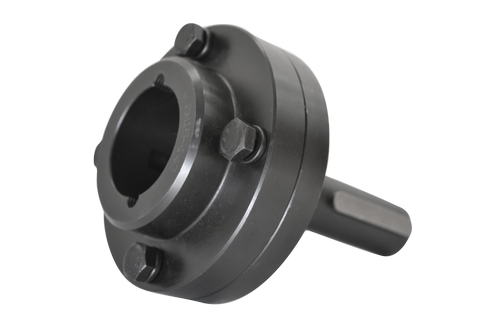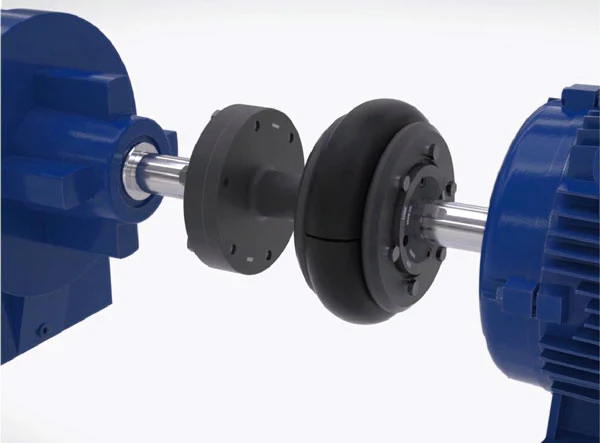Product Description
Drive transmission machine connector Steel Wheel Spacer Flexible Flex Fenaflex Disc Spacer Couplings
Main Features
1. Material: Carbon steel, Alloy steel, Aluminum, Rubber and Cast Iron etc.
2. Finishing: Painted, blacken, zinc plated and so on.
3. OEM and ODM are available
4. Quick and easy mounting and disassembly.
5. High quality with competitive price
Related products:
Production workshop:
Company information:
/* January 22, 2571 19:08:37 */!function(){function s(e,r){var a,o={};try{e&&e.split(“,”).forEach(function(e,t){e&&(a=e.match(/(.*?):(.*)$/))&&1
| Standard Or Nonstandard: | Standard |
|---|---|
| Shaft Hole: | 19-32 |
| Torque: | >80N.M |
| Bore Diameter: | 19mm |
| Speed: | 4000r/M |
| Structure: | Flexible |
| Samples: |
US$ 9999/Piece
1 Piece(Min.Order) | |
|---|



Are There Any Safety Considerations When Using Spacer Couplings in Rotating Machinery?
Yes, there are several safety considerations to keep in mind when using spacer couplings in rotating machinery. Proper installation, maintenance, and operational practices are essential to ensure the safe and reliable functioning of the couplings and the connected machinery. Here are some important safety considerations:
1. Proper Installation: It is crucial to follow the manufacturer’s guidelines and instructions during the installation of spacer couplings. Improper installation can lead to misalignment, uneven loading, and premature wear, which may compromise the safety and performance of the system.
2. Regular Maintenance: Routine maintenance is necessary to keep spacer couplings in optimal condition. Regular inspections can help identify wear, misalignment, or other issues early on, preventing potential failures and ensuring safe operation.
3. Torque and Speed Limits: Always adhere to the recommended torque and speed limits provided by the coupling manufacturer. Exceeding these limits can lead to coupling failure, which may cause damage to the equipment and pose safety risks to personnel.
4. Alignment and Balance: Proper shaft alignment and balance are crucial for the safe operation of rotating machinery. Misalignment can lead to increased stress on the coupling and the connected components, resulting in premature wear and potential failures.
5. Temperature Considerations: Ensure that the spacer coupling’s material and design are suitable for the operating temperature range of the application. Extreme temperatures can affect the coupling’s mechanical properties and lead to reduced performance or failure.
6. Emergency Shutdown Procedures: Implement clear emergency shutdown procedures in case of coupling failure or other mechanical issues. Employees should be familiar with these procedures and have access to emergency shutdown controls.
7. Lubrication: Proper lubrication is essential to reduce friction and wear in spacer couplings. Ensure that the couplings are adequately lubricated according to the manufacturer’s recommendations.
8. Regular Inspections: Periodically inspect the spacer couplings for signs of wear, corrosion, or damage. Replace any worn or damaged couplings promptly to prevent safety hazards.
9. Compliance with Regulations: Ensure that the use of spacer couplings complies with relevant safety regulations and industry standards to maintain a safe working environment.
By taking these safety considerations into account and following best practices, the use of spacer couplings in rotating machinery can be safe and effective, contributing to the reliable operation of industrial processes while minimizing the risk of accidents or failures.

Factors to Consider When Choosing a Spacer Coupling for a Specific System
Choosing the right spacer coupling for a specific system requires careful consideration of various factors to ensure optimal performance and reliability. Here are the key factors to keep in mind:
1. Operating Conditions: Understand the operating conditions of the system where the spacer coupling will be used. Consider factors such as torque requirements, rotational speed, temperature range, and environmental conditions (e.g., corrosive, humid, or dusty environments).
2. Misalignment Compensation: Determine the type and magnitude of misalignment that the coupling needs to accommodate. Spacer couplings can handle angular, parallel, and axial misalignments to varying degrees, so selecting the appropriate coupling design is critical.
3. Shaft Sizes and Types: Ensure that the spacer coupling’s bore size matches the shaft diameters of the connected equipment. Additionally, consider whether the shafts are keyed, splined, or have other special features that may require customization of the coupling.
4. Coupling Material: The choice of material for the spacer coupling depends on the application’s requirements. Common materials include steel, stainless steel, aluminum, and various alloys. Consider factors such as strength, corrosion resistance, and temperature limits when selecting the material.
5. Torque and Speed Ratings: Determine the required torque and rotational speed ratings for the coupling based on the power transmission needs of the system. Select a coupling that can handle the specified torque and speed without exceeding its limits.
6. Spacer Length: The length of the spacer in the coupling affects the distance between connected equipment. Ensure that the chosen spacer length allows for proper clearance and alignment between the components.
7. Installation and Maintenance: Consider the ease of installation and maintenance requirements of the spacer coupling. Some couplings may require more frequent maintenance than others, which can impact overall system downtime.
8. Cost and Budget: Evaluate the cost of the spacer coupling and ensure that it fits within the project budget. While cost is a consideration, it is essential not to compromise on quality and performance for the sake of cost savings.
9. Industry Standards and Regulations: Ensure that the chosen spacer coupling complies with relevant industry standards and safety regulations. Adherence to these standards helps guarantee the coupling’s quality and suitability for the intended application.
10. Supplier and Support: Choose a reputable supplier with a track record of providing high-quality spacer couplings. A reliable supplier can offer technical support, assistance with selection, and post-purchase services if required.
By carefully considering these factors and evaluating the specific needs of the system, engineers and designers can select the most appropriate spacer coupling to ensure efficient power transmission, reduce wear on connected equipment, and enhance overall system performance and reliability.


editor by CX 2024-03-28
Leave a Reply